February 10, 2020
«This translation from Spanish (the original text) to English is not professional. I used Google Translate, so there may be linguistic errors that I ask you to overlook. I have often been asked to share my texts in English, which is why I decided to try. I appreciate your patience, and if you see anything that can be improved and would like to let me know, I would be grateful. In the meantime, with all its imperfections, here are the lines I have written». Hugo Kliczkowski Juritz
Texto en español https://onlybook.es/blog/man-ray-objetos-de-ensueno/
Canal Foundation, Mateo Inurria, 2 . Madrid.
Exhibition curator Pilar Parcerisas Colomer (Manresa 1957) (1)
The Plaza de Castilla is a place with icons that recall many times, different styles, scams and frustrations.
Ahere are the towers KIO “Kuwait Investments Office” of 1996, twin towers inclined 15 degrees (the tower of Pisa is 4 degrees), called Doors of Europe.
They are 114 meters high with 26 floors, designed by architects Philip Johnson (Cleveland 1906 – 2005 New Canaan) & John Burge (Chicago 1933).
The sculpture (to call it somehow) of Santiago Calatrava (Valencia 1951), which should have moved, cannot do it even though it cost millions to do so (2).
There it works, the hall of the Isabel II canal, where it is possible to see exhibitions, many of them unforgettable.
For its impact, I remember the Auschwitz Exhibition organized together with the Auschwitz-Birkenau State Museum, which closed in early February 2019 with about half a million visitors, but for its beauty I want to refer to the one that exhibited the work of Man Ray.
“I paint what cannot be photographed. I photograph what I do not want to paint. I paint what is invisible. I photograph what is visible». Man Ray.
Man Ray, (pseudonym of Emmanuel Radnitzky, Philadelphia 1890- Paris 1976), began his career as a painter, although from 1915 he devoted himself mainly to photography.
After living with Marcel Duchamp (Blainville, France 1887 – 1968 Nevilly) and Francis Picabia (Paris 1819 – 1953), the effervescence of Dadaism in New York, he settled in Paris in 1921.
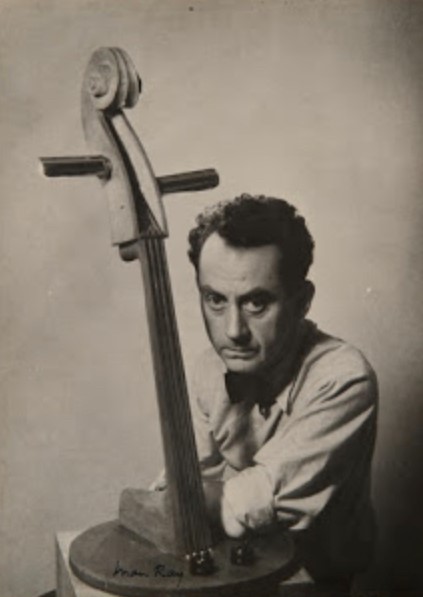
Very early on he knew how to differentiate between painting and photography.
“I paint that which cannot be photographed, that is, that which comes from the imagination or from a dream, or from an unconscious impulse. I photograph the things I don’t want to paint, the things that already exist.

He soon practiced a pictorial automatism with the airbrush, without canvas or palette, at an early date, 1918.
He freed photography from its utilitarian, scientific or documentary function and elevated “creative photography” to the status of a work of art.
He became the surrealists’ favorite photographer, as his graphic simplicity was capable of enveloping the most banal things with a halo of mystery.
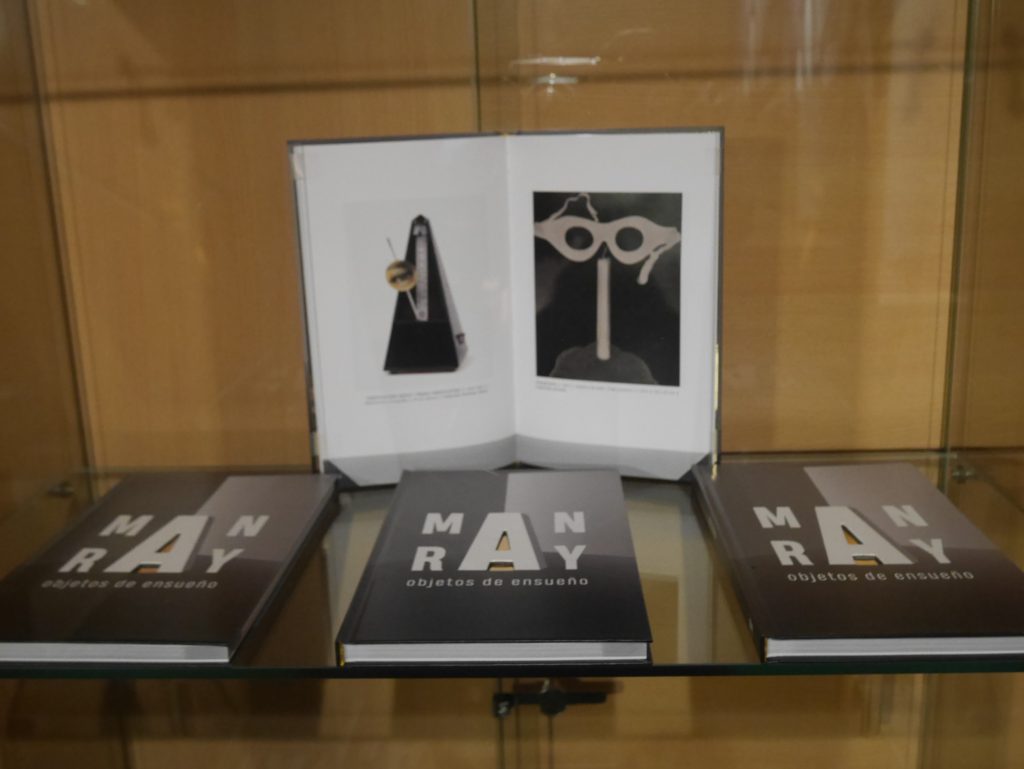
The surrealist movement embraced photography as an instrument linked to the psychic automatism it promoted, by virtue of which the artist allows the unconscious to dominate the creative act.
André Breton (Tinchebray 1896-1966 Paris) proclaimed that “the eye exists in a wild state” and Salvador Dalí (Salvador Felipe Jacinto Dalí i Domènech, Figueras 1904-1989).
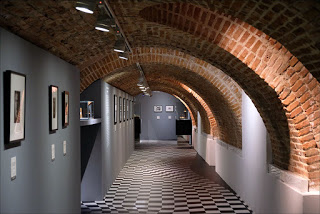
“…Photography is pure creation of the spirit”.Salvador Dalí
Surrealism introduced the common object into the field of sculpture, which acquired a symbolic meaning apart from its original functionality.
Man Ray with his “objets trouvés” (Found objects) created poetic objects, which he detached from their function of use. He extended his libertarian spirit to cinema, creating experimental films that opened the doors to avant-garde cinema.

Man Ray was very attracted to everyday objects and to experimentation in the laboratory. The result of both hobbies were the “Rayograms” (photographs without a camera) and the “Objets de mon affection” (objects of my affection), a set of autobiographical objects that illustrate the most ironic, critical, provocative and lucid side of the Dada spirit.
The writer and painter Georges Ribemont-Dessaignes (Montpellier 1884 – 1974 Saint-Jeanet) baptized them as “dream objects” because they are located in the domain of memory, dream and desire.

The naturalness with which Man Ray captures the existence of things is reflected in his portraits and self-portraits, in female nudes and in the very objects he photographs.
The exhibition takes a journey through the main themes addressed by Man Ray throughout his career and focuses on the poetics of the object, one of his greatest contributions to surrealism and twentieth-century art.
Friends, portraits and self-portraits
The appearance of photography changed the relationship between painting and portraiture.
Purely portrait photographers came to be seen as failed painters by the new avant-garde.
For Man Ray, creation began where reproduction stopped and the field of portraiture became a space for experimentation, he achieved fame in the Paris of the 1920s and 1930s. He made portraits of the aristocracy, the haute bourgeoisie and the artistic bohemians.
Dora Maar
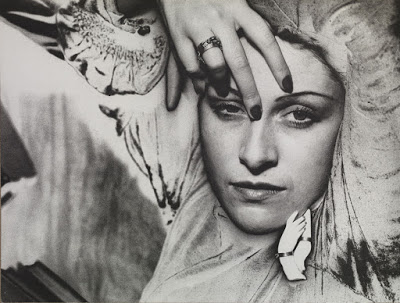
He managed to capture the existence and the aura of people and left testimony of friends such as Picasso (Pablo Ruiz Picasso, Malaga1881 – 1973 Mougins), Marcel Duchamp, André Breton (Tinchebray, 1896 – 1966 Paris), Mina Ley, German Stein, Lee Müller, André Derain (Chatou 1880 – 1954 Garches), Louis Aragon (Louis Andrieux Paris 1897 – 1982), Jean Cocteau (Maisons-Laffitte 1889 – 1963 Milly-la-Forêt) and many members of the surrealist group.
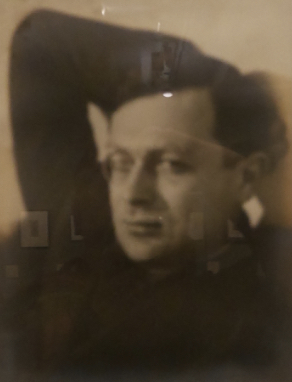
I also record the summer of 1937 where Picasso lived in Mougins with Dora Maar (Henriette Theodora Markovitch, Tours 1907 – 1997 Paris), Paul and Nusch Éluard (Maria Benz, Mulhouse 1906 – 1945 Paris) and his new love Ady Fidelin (Casimir Joseph Adrienne Fidelin, Pointe-à-Pitre 1955 – 2004 Albi).
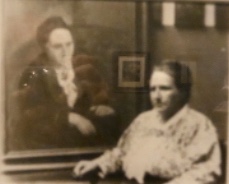
Later printing c. 1970. Private Collection
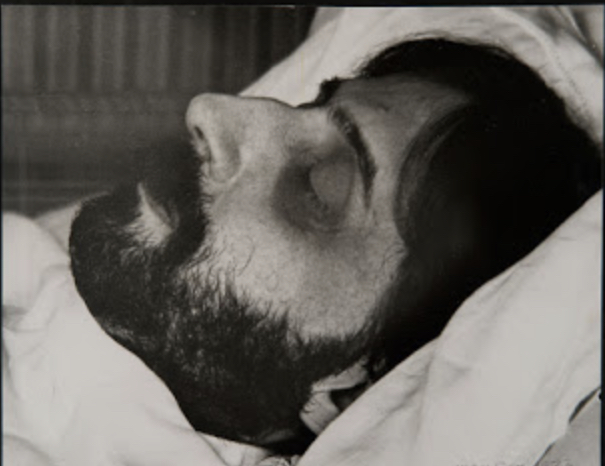
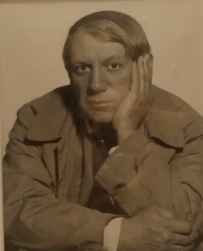
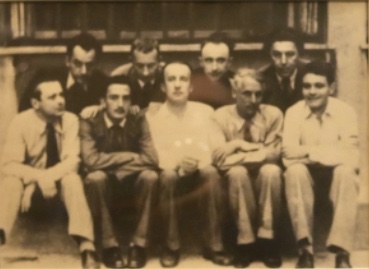
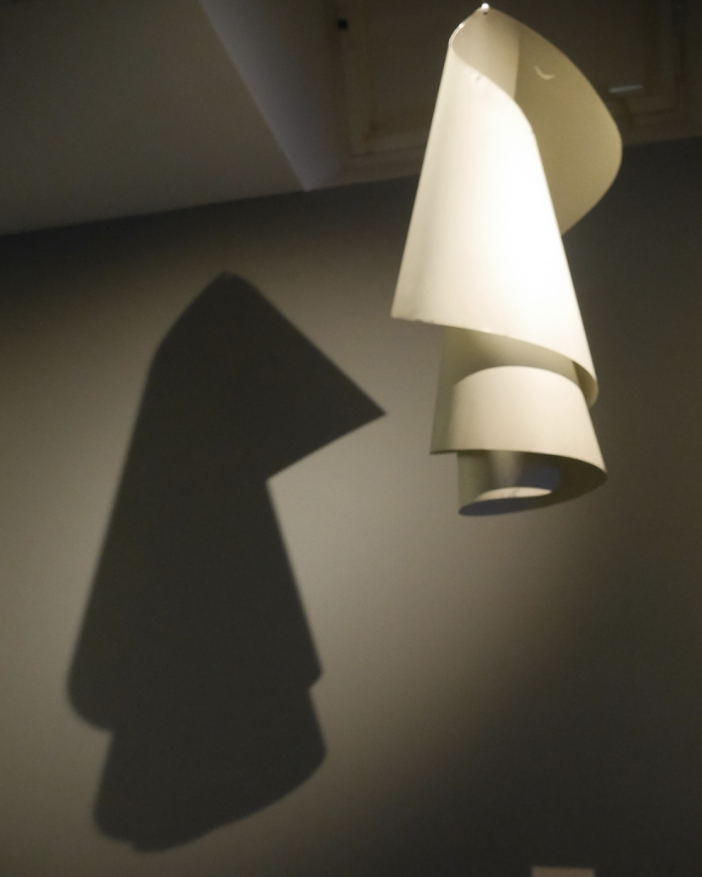
Rayogramas
Man Ray’s life was a continuous experimentation.
Around 1921 he discovered Rayograms or camera-less photos.
They consisted of recording the silhouette of small objects directly on photosensitive paper by means of the random incidence of light.
A discovery that follows in the wake of the nocturnality and the dream that so attracted the surrealists.

These photos turn the everyday objects he uses in his laboratory (matches, metal spirals, buttons, pens, pencils…) or in the kitchen (a mixer, a cheese grater, a pair of scissors or a string) into ghosts of themselves, into profane illuminations of the twentieth century.
Man Ray himself explained it this way:
“I rebelled against my camera and threw it away. I took whatever fell into my hand; the hotel room key, a handkerchief, pencils, a paintbrush, a piece of string. I was not obliged to bathe in the liquid. He would lay them on dry paper and expose them to the light for a few seconds as if they were negatives.
“I was very excited and had a lot of fun.”
In 1982 he published a set of Rayograms under the title “Les Champs délicieux” (The Delicious Fields) with a foreword by the poet Tristan Tzara (Samuel Rosenstock Moineşti Bacău 1896-1963 Paris) where the latter notes.

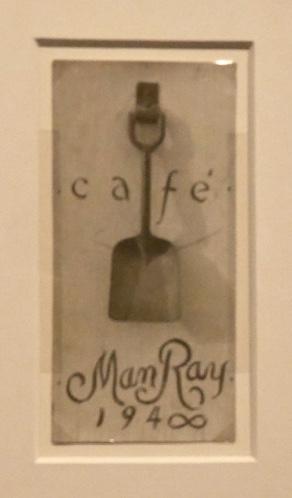
“These are the projections, the surprises in transparencies in the light of tenderness, the objects that dream and inhabit their dream.”
Isidore Ducasse’s enigma consists of a sewing machine (from 1920, remade in 1972) wrapped in a blanket and tied with a rope.
Inspired by a simile used by the French writer Isidore Ducasse (1809-87), known as the Count of Lautréamont.
“Beautiful as the accidental meeting, on a dissecting table, of a sewing machine and an umbrella.”
(The umbrella was interpreted as a masculine element, the sewing machine as a feminine element and the dissecting table as a bed).
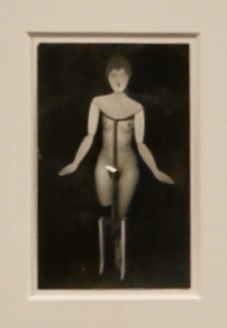
Original of the time Collection Hummel, Vienna
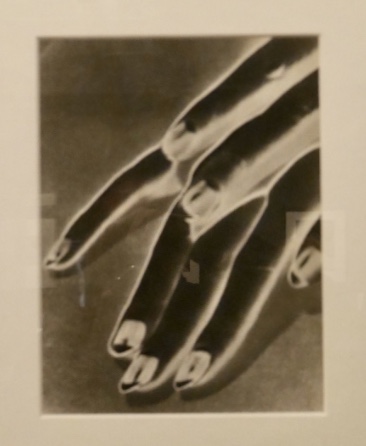
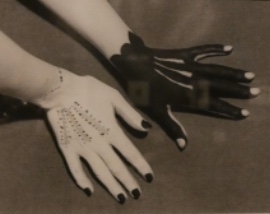
“Man Ray, a la escucha de la luz”. André Breton
Dream object

1
Man Ray always felt an attraction to the everyday object, the one that was not given any artistic value: By itself/, Por sí mismo (1918) which values the existence of the object in itself, and Lampshae/Pantalla (1921) converts a simple paper spiral into a lamp.
In Man Ray, objects are imbued with an autobiographical character. They represent the construction of his inner world, the mirror in which he reflects himself. He called them Objets de mon affection/ Objects of my affection.
André Breton had already defined him as “the great scrutinizer of the decoration of everyday life”. Unlike Marcel Duchamp’s Ready-Made/Found Art, which chooses an object manufactured by industry and elevates it to the status of a work of art. Man Ray creates something new from the association of two objects, in the style of the poet Lautréamont’s metaphor “beautiful as the chance meeting of a sewing machine and an umbrella on a dissecting table.”
Women and Venus
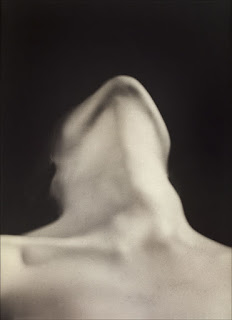
Man Ray contemplates the woman as an object of desire.
In the portrait of Lee Miller, his lab assistant and lover, his camera fragments the body and turns her stretched neck into an anatomy of phallic connotations. Her hands become objects in themselves.
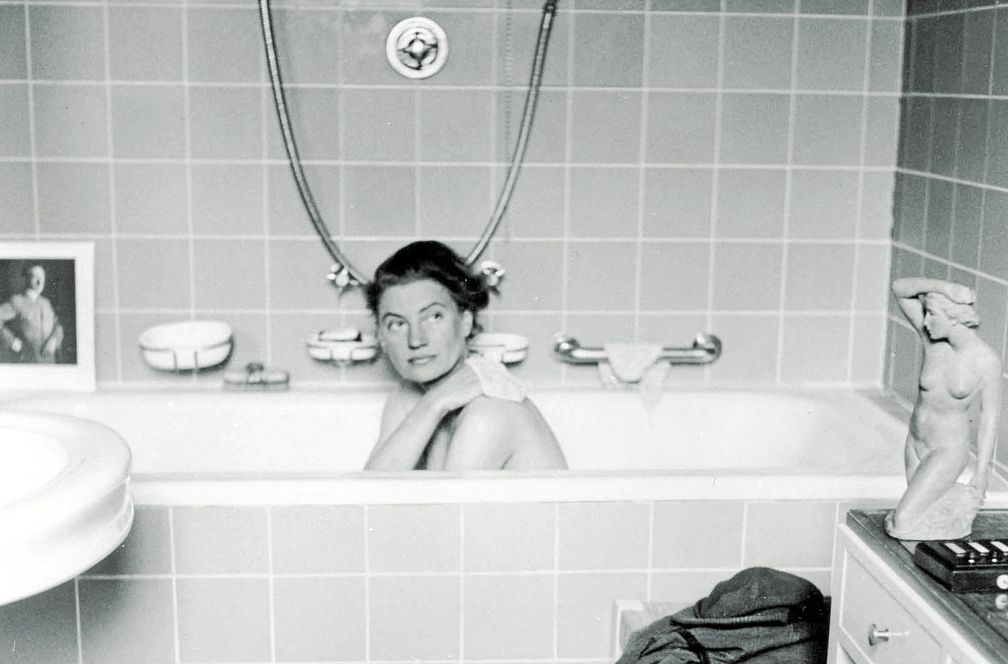
The nudes of Meret Oppenheim (1913-1985), in the studio of the engraver Louis Marcoussis (1883-1941), equate the beauty of the female body with the beauty of the machine.
The model shows her torso through the press, which she turns with her hand, while the other hand is inked. By placing the nude body in a workplace, Man Ray enlivens the desire that he also knew how to transmit in the field of fashion with his play of transparencies.
A tireless researcher, he discovered by chance, together with Lee Miller, “solarization”, a technique in which the image inverts its tone totally or partially when placed on a light-sensitive material: in the middle of the developing process, something climbed up Lee’s leg and when the light was turned on out of fear, the negatives in the developing tray were, when fixed, outlined by a halo. In this way he manages to highlight the outline of the body and face of Picasso’s lover, Dora Mar.
Between 1936 and 1940 Man Ray had a relationship with Adrienne Fidelin “Ady” (Casimir Joseph Adrienne Fidelin, Pointe-à-Pitre 1915-2004 Albi) a young mulatto dancer, originally from the French colony of Guadeloupe.
Ady’s nudes and the graceful movement of her body highlight the concept of beauty of the flesh-and-blood woman, as opposed to the artificial beauty of the mannequin seen in his works.
Man Ray and Marcel Duchamp: poetic machines Man Ray and Marcel Duchamp (1887 – 1968) met in 1915 in the USA. Man Ray had already seen in New York, at the Armory Show of 1913, his very famous Un descedant un escalier/Nude Descending a Staircase (1912), a work that had an effect not only on Man Ray, but on the entire history of 20th century art.
Man Ray photographed Duchamp’s studio with his cubist paintings. The ready-made (found art) and its shadows, he photographed Le Grand Verre/The Great Glass (1915 – 1923), with the dust accumulated on the glass, which he titled Èlevage de poussière/Dust Hatchery (1920), and even Marcel Duchamp himself as Rrose Séfavy, his female altar ego.(3)
The friendship between the two was one of the most fruitful of the twentieth century. They shared interests and affinities; together they opened art to an aesthetic influenced by industrialization and far from naturalism.
By identifying woman with the machine, Duchamp proposed a new concept of beauty; Man Ray, in turn, departed from the concept of naturalism, typical of traditional photography, by incorporating the camera into the concept of “automatism”, a means of creation that suppresses the artist’s conscious control over the process of creation, dominated by the unconscious.
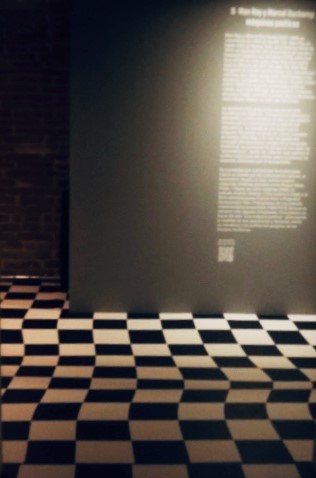
Their curiosity to understand modernity marked their interest in optical instruments, visual illusionism and cinema.
Together they created pioneering kinetic machines such as Rotary Glass Plates/Placas de vidrio rotativas (1920), the film Amémic Cinéma/Cine anémico (1926) or the stereoscopic film Frames from a Projected Stereoscopic Film/Fotogramas de una película estereoscópica proyectada (1925/1973) of which only a few frames were saved.
They agreed in making art “a political machine”, stripping reality of its appearances and making visible its mechanics and the dreams of progress of modern times.
Notas
1
A large part of the texts are those that accompanied the exhibition, which was open from January 31 to April 21, 2019.
2
Called “The Obelisk of the Caja”, built to celebrate the 300th anniversary of the founding of Caja Madrid (1702-2002). It was commissioned to the architect Santiago Calatrava (Valencia 1951). It was inaugurated in 2009. With a cost of 14 million euros (It is true, there is no mistake in this value), had a cost of conservation, maintenance, cleaning and surveillance of 300.00 € per year, only worked 3 months.
Called “The Obelisk of the Caja”, built to celebrate the 300th anniversary of the founding of Caja Madrid (1702-2002). It was commissioned to the architect Santiago Calatrava (Valencia 1951). It was inaugurated in 2009. With a cost of 14 million euros (It is true, there is no error in this value), had a cost of conservation, maintenance, cleaning and surveillance of 300.00 € per year, only worked 3 months.
3
https://fr.wikipedia.org/wiki/Rrose_S%C3%A9lavy
Duchamp es el primer artista que se reinventa en una mujer con producción literaria y plástica por derecho propio: La firma «Rrose Sélavy» se menciona por primera vez en la escultura titulada «Viuda fresca».
The spelling of the first name “Rose” is written with a single “r”.
This spelling then evolves and the first name takes two r’s “Rrose”, among other reasons for a series of photographs executed by Man Ray , where Duchamp is presented as transvestite in woman, made up and wearing a hat.
Duchamp films Rrose Sélavy in at least three films and one short film: the name chosen evokes the phrase “Eros is life”: Duchamp also states that he chose the name “Selavy” because of its Jewish sound. The double r in the first name evokes the double Ll that begins with some Welsh surnames , as in “Lloyd”.
In 1939, a collection of aphorisms appeared under the name of Rrose Sélavy, “Poils et coups de pieds de tous”, written by Duchamp.
On Saturday, May 15, 1965, Duchamp organized a “Rrose Sélavy dinner” at the Victoria restaurant in Paris and surrounded himself with about thirty guests, including Carl Fredrik Reuterswärd (1934 – 2016), Jacques Fraenkel (Paris 1896 – 1964), Gabrièle Buffet-Picabia (Fontainebleau 1881 – 1985 Paris), PR de Zayas and Marie-Claire Dumas, all members of the Association for the Study of the Dada Movement.
Reproduction in whole or in part is permitted provided the source is acknowledged. Thank you.
You may be interested in this topic, so I send you this suggestion from Hugo K: SUBURBIA http://onlybook.es/blog/suburbia-1a-parte/
Our Blog has been read more than 1.300.000 times: http://onlybook.es/blog/nuestro-blog-ha-superado-el-millon-de-lecturas/
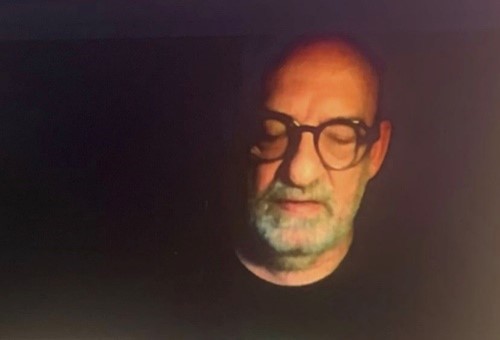
Arq. Hugo Alberto Kliczkowski Juritz
Onlybook.es/blog
Hugoklico.blogspot.com

Salvemos al Parador Ariston de su ruina
http://onlybook.es/blog/el-parador-ariston-una-ruina-moderna-por-hugo-a-kliczkowski/arteexposicionesfotografia
Entry navigation
Entrada anterior Palladio + Scamozzi arq. Opera y Venecia Xa. Parte 12Entrada siguienteEl Elogio de la Sombra. Tanizaki








